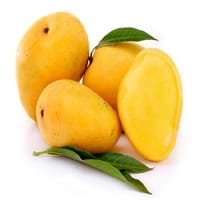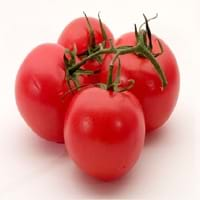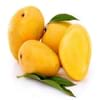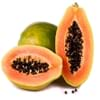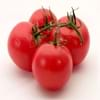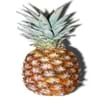Health Benefits
Cancer prevention, Cures fatigue, Heart care, Prevents strokes
Anti depressant, Cancer prevention, Heart care, Muscle pain relief, Prevents constipation, Regulation of heart rate, Weight loss properties
General Benefits
Anti oxidant properties, Boosts immune system, Controls blood pressure, Digestive aid, Improves eye vision, Maintains healthy cholesterol level
Controls blood pressure, Eye care, Maintains healthy cholesterol level, Strengthens bones
Skin Benefits
Anti-aging benefits, Brightens and lightens complexion, Skin cleansing, Skin rejuvenation, Treatment of acne, Treatment of blackheads, Treatment of dark spots
Anti-aging benefits, Heals sunburn, Skin rejuvenation, Treatment of acne, Treatment of skin diseases
Hair Benefits
Good conditioner, Prevents hair loss, Treatment of dandruff
Good conditioner, Prevents hair loss, Softening mask
Allergy Symptoms
Abdominal pains, Breathing difficulty, Diarrhea, Runny nose, Sneezing, Swelling of mouth, tongue or lips, Watery eyes
Anaphylaxis, Coughing, Diarrhea, Eczema, Hives, Itching sensation in throat, Nausea, Skin Rashes, Runny nose, Sneezing, Swelling of mouth, tongue or lips, Vomiting, Wheezing
Side Effects
Increase in blood sugar level, Diarrhoea, Weight gain
Heart burn
Best Time to Eat
Don't consume at night and before bed, Eat the fresh ones, avoid mixing with any other foods, don't eat after meal., Morning time (before lunch)
Along with meal, Don't consume at night and before bed, Morning time (before lunch)
Vitamin B5 (Pantothenic Acid)
Vitamin C (Ascorbic Acid)
Vitamin K (Phyllochinone)
Phytosterol
Not Available
Calories in Fresh Fruit with Peel
Not Available
Calories in Fresh Fruit without Peel
Not Available
Type
Tree fruit
Berry, Fruit vegetable
Season
Spring, Summer
All seasons
Varieties
Alphonso, Valencia Pride, Badami, Chaunsa, Nam Dok Mai, Glenn, Sindhri, Madame Francique, Kesar and Keitt
Better Boy, Early Girl, Beefsteak, Beefmaster, Pink Brandywinem, Caspian Pink, Thai Pinks, Hawaiian Pineapple, Kellogg’s Breakfast, Cherokee Purple, Black Ethiopian and Paul Robeson
Color
Orange, Red, Yellow
Green, Orange, Pink, Purplish black, Red, White, Yellow
Origin
Southern Asia
Central America, South America
Soil Type
Clay, Loam, Sand
Loam, Sandy loam
Climatic Conditions
Humid, Warm to hot climate
Sunny, Warm
Facts about
- A mango tree can bear fruits even after the age of 300 years.
- Height of a mango tree can be as high as 100 feet.
- In India, mango is known as a symbol of love. Also, a mango basket is considered as the sign of friendship.
- Around 10,000 varieties of tomatoes are grown in the world.
- In Buñol, people celebrate the Tomatina festival where around 1.5 lakh tomatoes are used.
- As per Guinness book of records, heaviest tomato weighed 3.51 kg.
Other Countries
Bangladesh, Brazil, China, Indonesia, Mexico, Nigeria, Pakistan, Philippines, Thailand
Brazil, Egypt, India, Iran, Italy, Mexico, Spain, Turkey, United States of America
Top Importer
United States of America
Nigeria
Top Exporter
Mexico
Netherlands
Botanical Name
Mangifera Indica
Solanum lycopersicum
Synonym
Not Available
Lycopersicon esculentum
Subkingdom
Tracheobionta
Tracheobionta
Division
Magnoliophyta
Magnoliophyta
Class
Magnoliopsida
Magnoliopsida
Subclass
Rosidae
Asteridae
Order
Sapindales
Solanales
Family
Anacardiaceae
Solanaceae
Species
M. indica
S. lycopersicum
Generic Group
Cashew
Nightshade
Difference Between Mango and Tomato
We might think that Mango and Tomato are similar with respect to nutritional value and health benefits. But the nutrient content of both fruits is different. Mango and Tomato Facts such as their taste, shape, color, and size are also distinct. The difference between Mango and Tomato is explained here.
The amount of calories in 100 gm of fresh Mango and Tomato with peel is Not Available and 18.00 kcal and the amount of calories without peel is 60.00 kcal and Not Available respectively. Thus, Mango and Tomato belong to Low Calorie Fruits and Low Calorie Fruits category.These fruits might or might not differ with respect to their scientific classification. The order of Mango and Tomato is Sapindales and Solanales respectively. Mango belongs to Anacardiaceae family and Tomato belongs to Solanaceae family. Mango belongs to Mangifera genus of M. indica species and Tomato belongs to Solanum genus of S. lycopersicum species. Beings plants, both fruits belong to Plantae Kingdom.
